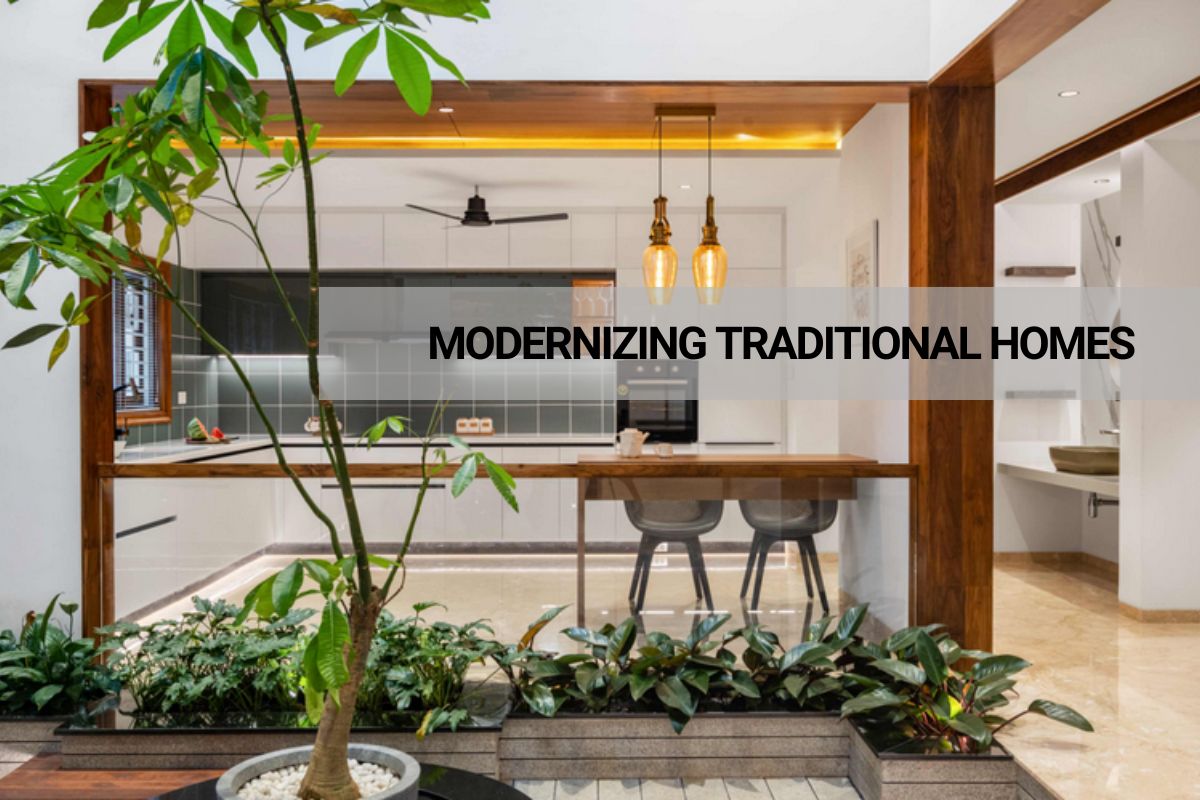


Kerala is famous for its unique vernacular architecture, a style deeply rooted in the state's culture, climate, and natural resources. From the sloping tiled roofs to intricately carved wooden columns, traditional Kerala homes are not only beautiful but also perfectly suited to the tropical weather. However, with changing lifestyles and the demand for modern amenities, many homeowners are looking to blend the charm of vernacular architecture with contemporary design.
In this blog, we’ll explore how you can honour the timeless appeal of traditional Kerala homes while introducing modern elements that enhance comfort, functionality, and style.
The sloped and tiled roofs, a hallmark of Kerala’s vernacular architecture, are designed to withstand heavy monsoons while keeping the interiors cool. To modernize this feature, homeowners can opt for contemporary materials like clay roof tiles with improved thermal insulation, or metal roofing that mimics the look of traditional tiles but offers greater durability.
By preserving the roof’s iconic shape while updating the material, you can give your home a modern twist without losing its authentic appeal.
Traditional Kerala homes are known for their intelligent use of natural ventilation. Features like large windows, verandas, and inner courtyards allow airflow to keep the home cool during hot, humid days. To modernize this, architects are incorporating larger, energy-efficient windows with UV protection and natural ventilation systems that control airflow more effectively.
Glass doors and sliding windows can bring in more natural light while maintaining the airy, open feel of traditional homes.
Vernacular homes in Kerala often have a seamless connection between the indoors and outdoors, with verandas, courtyards, and shaded walkways. To bring this concept into the 21st century, homeowners can create open-plan living spaces that extend into outdoor areas like patios or gardens.
Modern materials like concrete and steel can be used alongside traditional wooden pillars and red oxide floors, creating a beautiful contrast between the old and new.
While traditional homes in Kerala are often filled with ornate wooden furniture and detailed carvings, modernizing the interiors doesn’t mean stripping away all the characters. Instead, opt for a minimalist approach where open spaces, neutral colours, and natural light dominate the room. You can still incorporate traditional elements like antique wooden furniture, brass lamps, and handwoven rugs to retain the cultural essence.
This minimalist-modern blend keeps the space feeling fresh and open while celebrating Kerala’s rich heritage.
One of the key aspects of vernacular architecture is the use of local, sustainable materials like laterite stone, clay, and timber. To modernize these materials, architects are using them in new ways—such as polished laterite walls or timber cladding—to give homes a sleek, contemporary finish.
Embracing sustainability is crucial for modern homes, and using locally sourced materials reduces the environmental impact while maintaining the authenticity of Kerala’s architectural style.
The traditional “nalukettu” design, with its central courtyard, is a key feature of vernacular architecture in Kerala. This open space at the heart of the home allows natural light and ventilation to flow throughout the house. Modernizing the courtyard can involve adding contemporary landscaping, glass roofing, or water features to enhance its aesthetic appeal while maintaining its functional purpose.
A courtyard with a modern twist can become a focal point in your home, offering a peaceful retreat in the middle of your living space.
Blending the old with the new doesn’t just stop at design elements. Many homeowners are integrating smart home technology into traditional Kerala homes, ensuring the house is not only beautiful but also equipped for the future. From smart lighting and temperature control to home security systems, technology can be subtly integrated without taking away from the traditional look and feel.
In fact, many smart home solutions today are designed to blend seamlessly into any architectural style, making it easier than ever to modernize your home without sacrificing its character.
Vernacular architecture in Kerala has stood the test of time, offering homes that are not only stunning but also perfectly suited to the state’s tropical climate. However, modernizing these traditional homes can give them a fresh look and feel while enhancing functionality and comfort. By blending the old with the new—whether through sustainable materials, smart technology, or minimalist interiors—you can create a home that respects the past while embracing the future.
Want to modernize your traditional Kerala home? Our team of expert architects can help you design a space that beautifully combines heritage and modernity. Contact us today to start your journey.